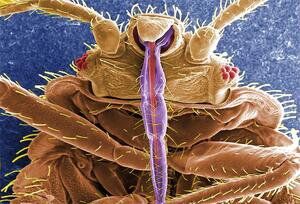Co-op and Condo Boards Have Different Responsibilities Regarding Bedbugs

Feb. 4, 2014 — Getting bitten? Don't be shy. It's time to talk once again about bedbugs (also spelled "bed bugs"), those bloodsuckers from Hell that are present in many homeowners' nightmares. Although complaints about the pests have diminished, New York City co-op and condo dwellers, among others, still deal with outbreaks. Eradication can be a huge expense, and if bedbugs spread throughout the building, more than one pest control visit may be required to fully get rid of them.
The law is clear: Landlords are responsible for ridding their rental tenants' apartments of any infestations. But what about residents living in cooperative apartments or condominiums? What responsibility would a co-op corporation or condo association have in this situation?
In the courts' eyes, there are some key differences between co-ops and condos that could place the financial burden on the individual occupant in certain situations. This column, we'll look at co-ops
Act Quickly
Co-op apartments are governed by proprietary leases, which allow the resident to occupy the apartment under a typical lease and take ownership of stock in the corporation that owns the building. Because these documents are leases, residents will be covered by the warranty of habitability (New York Real Property Law, Section 235-b), which requires rental building owners to maintain the property in a condition fit for human habitation and free of conditions that would endanger the health, life, or safety of the occupants. Therefore, it is the responsibility of the co-op board to provide extermination of any bedbugs found in a co-op apartment.
Some proprietary leases will hold an occupant financially responsible for his or her own apartment and the corporation responsible for any common areas. In 2009, however, the court in Zayas v. [Franklin] Plaza found that even where a proprietary lease places the financial burden of extermination on an individual unit occupant, the corporation will still be fully responsible for a building-wide infestation of bedbugs.
The only way in which a corporation could escape paying for the work is if an individual owner is the source of the infestation; in that case, the owner could have to pay back any costs the corporation incurs in ridding the building of bedbugs. However, this is difficult to prove.
Residents can even recover attorneys' fees if they obtain a highly favorable judgment. But shareholders should use caution because many proprietary leases require a plaintiff to reimburse the corporation for its attorneys' fees if the claim is denied or ruled insubstantial.
Attorney Steven Troup is a partner at Tarter Krinsky & Drogin.
For more, see our Site Map or join our Archive >>
Photo: Digitally colored electron-micrograph image of bedbug ventral surface from the Centers for Disease Control and Prevention's Public Health Image Library

